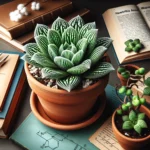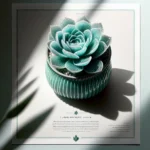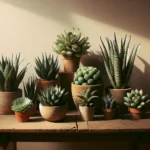Introduction to Haworthia Coarctata
Discover the unique charms of Haworthia Coarctata, a sought-after succulent known for its ease of care and striking appearance. Get familiar with its origin, characteristics, and why it’s a must-have for plant enthusiasts.
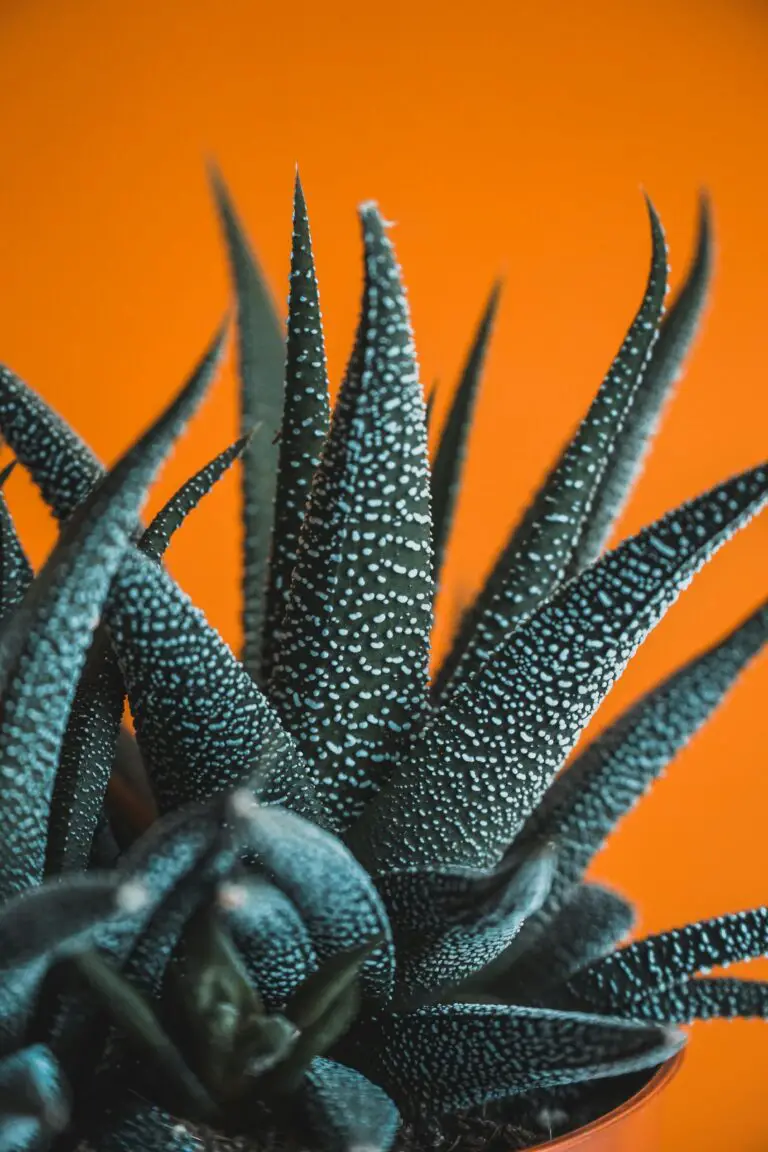
Thriving in the nooks of rock gardens or basking on sunny windowsills, Haworthia Coarctata brings a touch of rustic elegance to any setting. This South African native is remarkably resilient, often praised for its flexible care routine that suits even the busiest of green thumbs. Used as a captivating centerpiece or a companion to other succulents, it never fails to add a visually interesting touch to plant collections.
With its robust, fleshy leaves spirally arranged in a columnar fashion, each leaf dons a series of white bumps or ‘tubercles’ giving it an almost beaded look. Imagine a miniature, patterned column standing proudly among your plant collection, offering a unique texture that complements softer, smoother plants beautifully.
For those looking to create their very own succulent garden, Haworthia Coarctata can serve as a stunning focal point. Its tolerance for various lighting conditions and minimal water requirements make it an ideal candidate for both budding and seasoned gardeners.
Ideal Growing Conditions
Welcome to your succulent haven where Haworthia Coarctata takes the spotlight! This little gem of the plant kingdom doesn’t ask for much, thriving in just the right nook of your garden or windowsill. Now, let’s chat about the cozy comfort zone this charming succulent prefers, taking cues from its South African roots.
First off, these sun-loving beauties embrace the light. But beware of that afternoon scorcher—indirect sunlight is Haworthia Coarctata’s best friend. Picture the perfect, sunny spot under a tree, where rays of sunshine play hide-and-seek. That’s your plant’s jam! Of course, inside, they don’t mind a bit of catching some rays through a sheer curtain—sort of like wearing a sunhat.

Now, hear me out about temperature—room temperature works just fine. No need for tropical heat waves or arctic blasts. These plants are chill in the truest sense, comfy between 60°F to 85°F. And guess what? They can even take a little cold snap as long as it’s above freezing, making them pretty resilient roomies.
Humidity? It’s quite laid back on that front too—a dry, arid vibe suits it just fine, simulating its natural habitat. Your typical home environment should work perfectly, no need to crank up a humidifier or start misting sprees.
For more insights into creating the perfect environment for your succulents, have a peep at the invaluable tips offered in our guide on succulent soil.
The goldilocks of growing conditions make Haworthia Coarctata not only a joy to grow but also a cinch to integrate into your lifestyle. Whether you’re a seasoned green thumb or a budding plant enthusiast, this little plant is bound to bring a refreshing touch of greenery to your abode.
Soil and Planting Guide for Haworthia Coarctata
Welcome, green thumbs and succulent enthusiasts! Today, we’re diving into the world of the Haworthia Coarctata, a striking succulent renowned for its robust and elegant form. But don’t let its tough exterior fool you; even the sturdiest plants need the right foundation to thrive. That’s where the soil mix and drainage come into play—two crucial elements for cultivating a luscious Haworthia garden.
Imagine you’re laying down the groundwork for a castle—that’s your soil mix for these succulent treasures. You’ll want a blend that’s equal parts supportive and breathable. A standard cactus mix does a decent job, but if you’re looking to give your Haworthia Coarctata the royal treatment, consider a custom blend. Mix in coarse sand or perlite with your potting soil to enhance drainage. This isn’t just a whimsical suggestion; it’s like building moats around your castle, guiding excess water away to prevent the dreaded root rot.
Now, let’s talk about planters. The right pot is like choosing a home for your succulent, and drainage holes are non-negotiable. These aren’t just for show, they’re your plant’s lifeline, preventing water from pooling at the bottom. Remember, a soaked succulent is a sad succulent.
When it’s time to plant or repot your Haworthia Coarctata, the process should be as smooth as a gentle breeze. First, carefully remove your plant from its current abode, being mindful of its delicate roots. Gently tease them apart if they’re clumped together. You’ll want a pot that’s slightly larger than the root ball, giving it room to grow—not too snug, yet not swimming in space. Fill the bottom with your premium soil mix, place your Haworthia in the center, and surround it with more soil. Pat it down lovingly, just enough to make it feel secure, not compressed.
One last tip before we let you dive into your gardening adventure: When watering, be as generous as a light rain shower on a summer’s eve. You’ll want to water thoroughly but infrequently, allowing the soil to completely dry out between waterings. This mimicks their natural arid habitats and encourages robust growth.
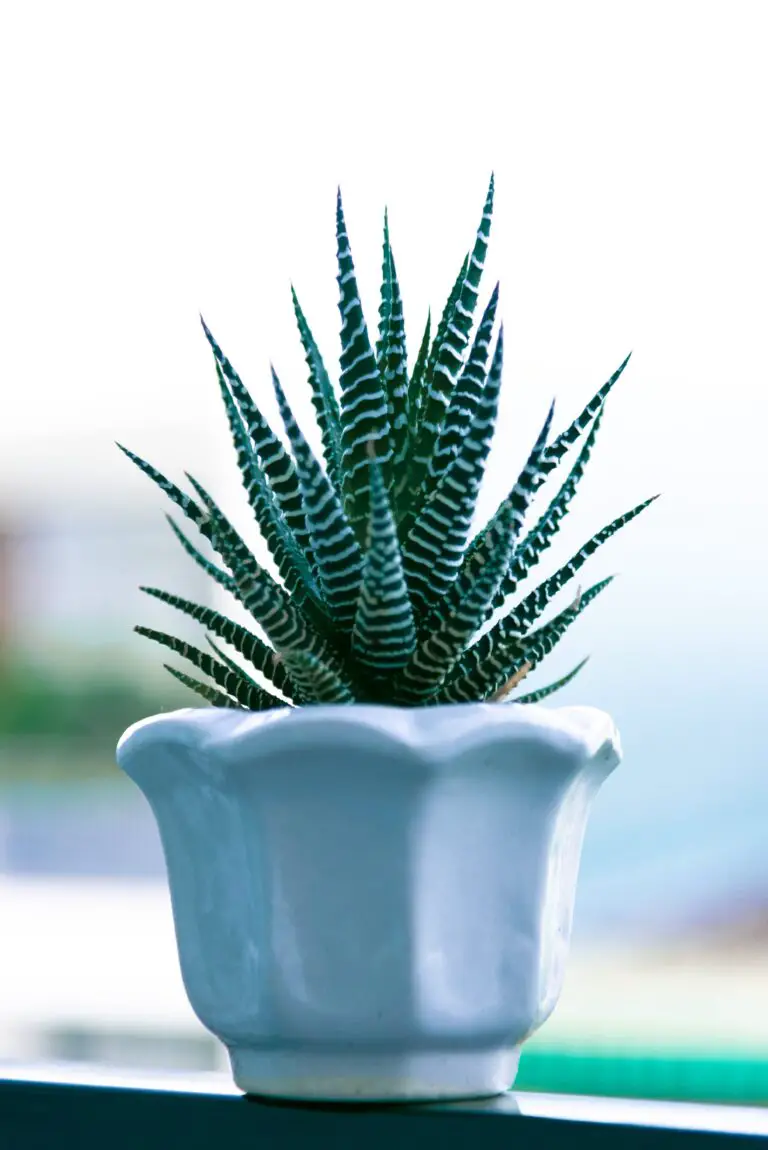
Congratulations! You are now equipped with the essential knowledge to ensure your Haworthia Coarctata not only survives but flourishes, turning your space into a succulent oasis. Roll up your sleeves, get your hands a little dirty, and bask in the joy of nurturing these resilient green gems. Happy planting!
Watering and Feeding
Treating your Haworthia Coarctata to the right amount of water can be likened to serving a perfect cup of coffee – it’s all about balance! Let’s brew a healthy life for your succulent starting with the ‘soak and dry’ method. It entails waiting until the soil is completely dry before giving it a thorough soak. Imagine the roots sipping water like a parched traveler in the desert, grateful for every drop. It’s a surefire way to mimic their native arid habitat and prevent root rot.
Speaking of nourishment, these little green treasures do enjoy some food, but they’re not gluttons. During the growing season, treat them every so often – just like spicing up a dish – with a half-strength balanced fertilizer. It’s the ‘salt and pepper’ that ensures vibrant growth without overwhelming their system. Away from the full meal of rich garden soil, a lean diet keeps them tough and resilient.
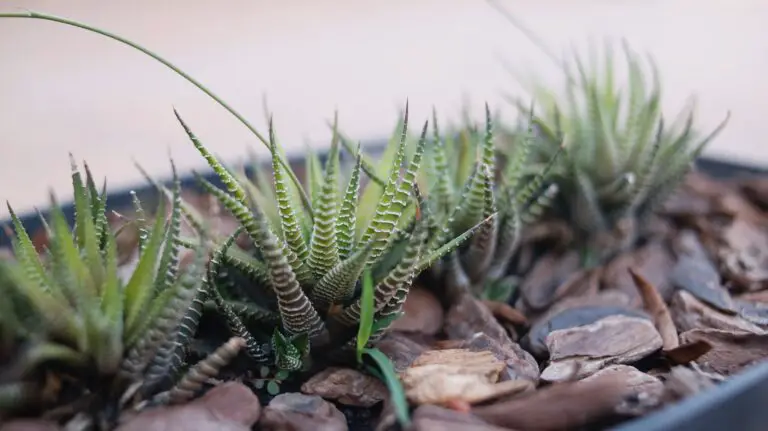
Remember, over-watering is the ‘too much sugar’ of succulent care. It’s tempting to water regularly, but when it comes to Haworthia Coarctata, think of them as the plant equivalent of a camel – a desert dweller storing water for the long haul. By respecting their natural preferences, you’re setting the stage for your very own miniature succulent oasis.
To further explore the unique world of succulents, dive into the art of succulent care, where you can learn to curate a thriving garden of these drought-tolerant beauties. It’s a voyage through the fascinating diversity of these hardy plants that, much like our Haworthia coarctata, bring a touch of exotic wilderness into our homes and hearts.
Pruning and Maintenance
You might think your Haworthia Coarctata can get by with just an occasional water and a sunny spot on the windowsill. Yet, there’s more to keeping it in tip-top shape than meets the eye. Pruning and maintenance are not just about aesthetics; they’re a ticket to a long, lush life for your succulent friend. Let’s dig into the hows and whys of keeping your green oasis in peak condition.
Imagine this: tiny shoots crowding the base of your plant, sapping precious nutrients and resources. These are the pups, and while they’re adorable, they’re also in dire need of your intervention. By pruning off these offsets, you allow the mother plant to regain her strength, bounce back fuller and greener, and you even get a bonus – new plants to expand your collection or share with friends!
Maintenance is more than a one-time event; it’s a routine. Wipe those leaves with a soft, damp cloth to unblock the pores, so your Haworthia Coarctata can breathe easy and soak up the sun. Yes, plants respire too, and a dusty coat is no friend to photosynthesis. Just like you’d fluff a pillow or plump a cushion to maintain its shape and comfort, consider maintenance for your succulent a similar kind of fluffing – but with a little more water and a lot less cotton.
But don’t just take my word for it. Watch this informative to see how it’s really done. You’ll be snipping and wiping like a pro before you can say “Haworthia Coarctata.”
Remember, your plant’s leaves are like little solar panels, and pruning is your way of ensuring they catch every possible ray. So gather your shears, get up close with your leafy charge, and give it the care it deserves. With regular maintenance, your succulent won’t just survive; it’ll thrive, turning your home into the verdant oasis you’ve always dreamed of.
Time for a Trim: A Cautionary Tale
Let me tell you about Sally. She had a Haworthia Coarctata that grew outwards rather than upwards, its elegant zebra-striped leaves sprawling untidily across the pot. Sally thought it looked fine until one day, she noticed the center wasn’t getting enough light, and the once vibrant leaves were starting to dull. That’s when she realized: it was time for a trim.
After a careful pruning session, Sally’s succulent was not just surviving, but flourishing. The leaves were turgid and glossy, pointing up towards the sun like nature’s own obelisk. It was a clear message: proper pruning leads to a pristine plant.
So, keep those secateurs handy and remember – a little off the top today means a lot more Haworthia Coarctata to love tomorrow. Just like Sally, you’ll see just how rewarding keeping a tight ship, or rather, a neat pot, can be.
Propagation Techniques
Are you ready to dive into the world of cultivating your own Haworthia Coarctata? Excellent choice! This succulent is a real gem in the plant kingdom, admired for its robust, fleshy green columns adorned with white ridges. But the real magic happens when you multiply these beauties. Let’s embark on a rewarding propagation journey together, okay? Grab your gardening gloves, and let’s get started!
Starting with Offsets: Nature’s Gift for Easy Propagation
First up, we have offsets—nature’s own way of saying, “Here, have some free plants!” Haworthia Coarctata produces these little clones around its base, which you can easily pluck and pot. Wait for the offsets to form a healthy root system, gently separate them from the mother plant, and pot them in well-draining soil. Picture this: One plant turns into two, two become four, and so on—it’s like a never-ending succulent bonanza!
Leaf Cuttings: Grow a Garden from a Single Leaf
Leaf cuttings sound almost too good to be true, right? But with Haworthia Coarctata, it’s a legit propagation method. Take a healthy leaf, let it callous over for a few days to avoid any unwanted bacterial parties, then lay it on top of soil that mimics the arid homelands of your succulent friend. It’s a waiting game, but in a few weeks, you’ll witness tiny roots and a miniature plant emerging. It’s an entire ecosystem sprouting from just a leaf—quite the spectacle!
Seeds: Cultivating Patience and Plants
Finally, we have the seeds—the tiny encapsulated promise of new life. Starting Haworthia Coarctata from seeds might test your patience, but it’s an adventure in itself. Sprinkle the seeds over the soil surface, mist them lightly, and give them that sweet greenhouse vibe by covering them to keep the humidity in. Sure, it takes longer than the other methods, but imagine the satisfaction of nurturing a plant from its infancy. It’s like witnessing the plant’s whole life story unfold right in front of you!
Before you start, feast your eyes on this! It’s not just any image; it’s your future windowsill turned succulent oasis in the making!
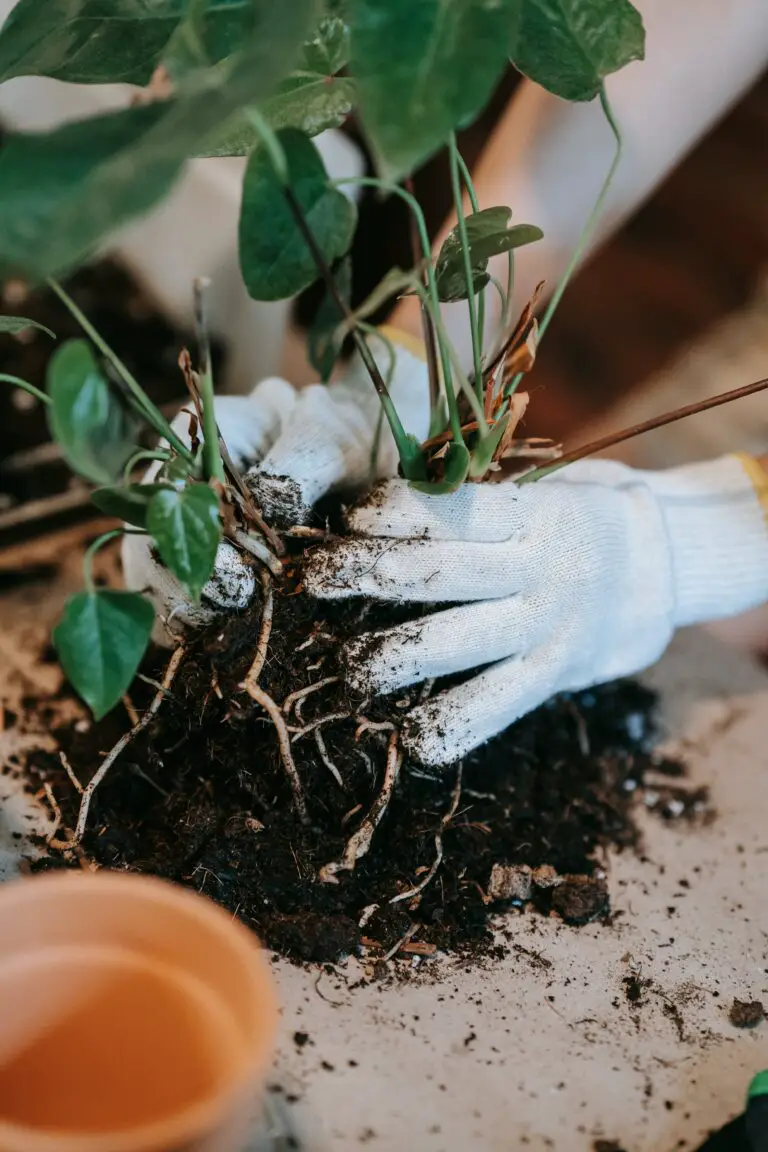
Remember, successful propagation doesn’t only create new plants; it also strengthens your bond with nature. Every new Haworthia Coarctata is a testament to your care and dedication. So, channel your inner green thumb and transform those fleshy leaves and slumbering seeds into an abundance of succulent splendor!
Pests and Common Problems
Imagine this: you’ve nurtured your Haworthia Coarctata, watching it grow into a architectural mini tower of green delight. Then one morning, you notice tiny nibbles on the leaves, or worse, an army of aphids staging a sit-in. Don’t panic! In this section, we’ll zero in on some tiny troublemakers and dish out the dirt on how to keep your succulent sanctuary safe.
The usual suspects that may crash your Haworthia party include aphids, mealybugs, and spider mites. Aphids are fond of new growth, turning your plant’s tender tips into their personal cafeterias. Mealybugs, those white cotton-like beasties, love to set up camp in the cozy crevices of your plant. Spider mites? They’re the stealthy ones—tiny and teeming, they weave fine silk over the foliage, sapping your plant’s strength.
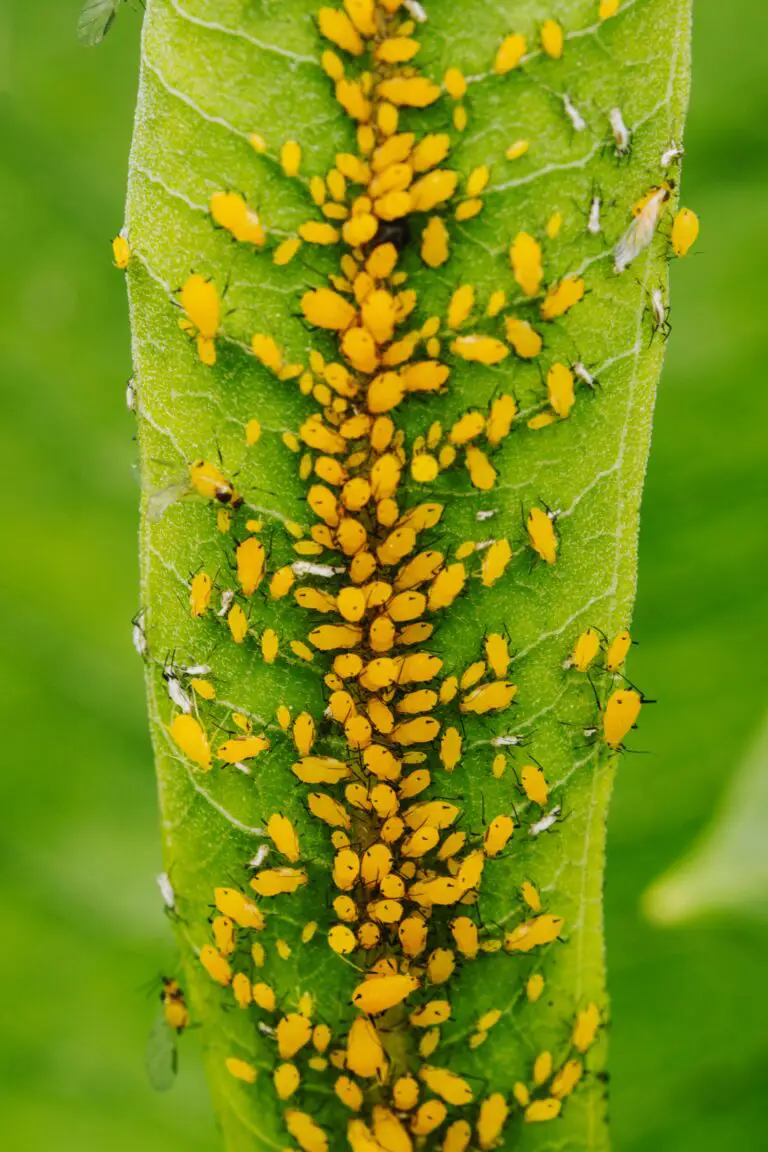
Now let’s get your hands dirty (metaphorically, of course). First up, prevention: check new plants for stowaways before introducing them to your collection—a thorough look-over can save you heartache later. Isolate newcomers; think of it as a succulent-style quarantine. As for treatment, neem oil is your green thumb’s best friend—a natural pest repellant that’s kinder to the environment than chemical pesticides.
When you’re dealing with an infestation, it’s time for some hand-to-hand combat. Don a pair of gloves, and show those mealybugs the door with a cotton swab dipped in rubbing alcohol. For aphids and spider mites, a gentle shower from a spray bottle filled with soapy water can knock them off their feet; just be sure to rinse your Haworthia afterwards to prevent soap residue.
Be vigilant, and inspect your succulents regularly for any signs of pests. Curling leaves, discoloration, or a sticky substance known as honeydew (a polite aphid term for “I was here”) are telltale signs of uninvited guests. Treat problems early and keep your Haworthia Coarctata thriving. Remember, the best offense is a good defense—keep your plants strong, and they’ll be less inviting to pests.
Design and Decoration Ideas
Imagine walking into a room where a cluster of Haworthia coarctata sits elegantly in a sleek, modern pot, the sun casting playful shadows through their tightly-packed, green leaves. This striking succulent can transform any space into a serene oasis. But how exactly can we showcase Haworthia coarctata to enhance our living spaces?
First, let’s talk pots. While the Haworthia coarctata is low maintenance, it’s vital to choose a pot that complements its architectural form. Consider a minimalist ceramic pot that accentuates its leafy textures. For a rustic feel, pair it with a distressed clay pot. Just envision a well-weathered terracotta on your wood-paneled patio, giving an impression of timeless elegance.
Now, imagine compounding that beauty by grouping your Haworthia with companion plants. Picture it sharing a large, shallow dish with a mix of other succulents, creating a mini succulent garden. Each plant provides contrast in color and form, enhancing the visual appeal of the arrangement. The Haworthia’s verticality paired with the sprawling nature of a Sedum or the rosette pattern of an Echeveria makes for an eye-catching display.
But it’s not just pots and pairings; placement is paramount. All it takes is positioning your Haworthia coarctata in that sunny nook by the window or on floating shelves against a bold accent wall. Light filters through, embracing each leaf with a natural glow, highlighting the Haworthia’s striking textures and patterns.
If you’re fascinated by the idea of a bioactive setup, then incorporating Haworthia coarctata into such an environment elevates its allure. The symbiotic relationship between the plants and their surroundings isn’t just aesthetically pleasing—it’s a conversation starter. Imagine a living piece of art thriving in your lounge, a focal point that brings a touch of the natural world indoors.
Visual Inspiration for Haworthia Coarctata Displays
To help you visualize these decor concepts, take a look at this video showcasing various ways to display succulents like Haworthia coarctata:
Decorating with Haworthia coarctata isn’t just about adding a plant to a room; it’s about curating a living piece of art. Each chosen element, from the pot to the placement, contributes to a harmonious design that brings calm and beauty into our everyday lives. So whether you’re a seasoned gardener or a budding enthusiast, inviting the elegance of Haworthia coarctata into your home is an effortless step towards creating your personal succulent oasis.
Frequently Asked Questions
Cultivating the Haworthia Coarctata, a jewel in the succulent world, raises a variety of questions from curious beginners to the green-thumbed maestro. This section answers those burning questions with ease.
What’s the Best Season for Growing Haworthia Coarctata?
Imagine a calendar; the Haworthia Coarctata flourishes when the months are mild. Spring through fall is your golden window, as temperatures are just right—not too hot, not too cold, like the porridge that Goldilocks chose!
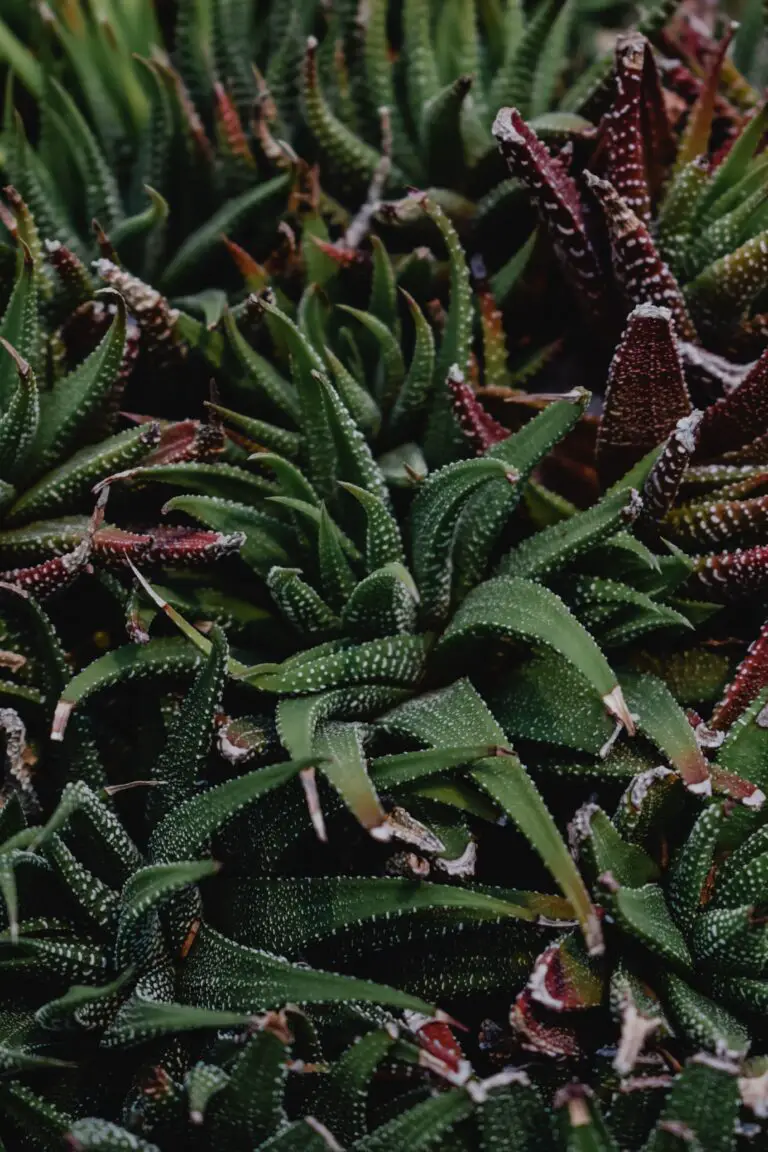
When Can I Expect My Haworthia to Bloom?
It’s a little like asking when a shy teenager will choose to come out and dance—a bit unpredictable. But generally, the Haworthia Coarctata may surprise you with delicate flowers in summer or fall. If you’re lucky, it’s like an elegant performance you didn’t expect at your garden soiree!
Tips for Optimal Blooms?
Be patient, first-timers. The secret recipe includes well-draining soil, bright but indirect sunlight—think of it like a cozy corner spot at your favorite café, and judicious watering (less is more). It’s kind of like playing matchmaker for your plant, ensuring the environment is just right for the love affair that ends in blossoms.
Is My Haworthia Coarctata Feeling Too Squeezed?
These succulents are pretty zen; they don’t mind a tight space—it’s their version of a snug hug. But keep an eye on them. When they seem to outgrow their pots, like a teenager outgrowing shoes, it’s time to offer them a new abode with a bit more wiggle room.
Remember, your green friend is hardy but appreciates your attention—a little tender care, and you’ll have a thriving mini-oasis on your hands. Keep this up, and you might just be the Haworthia whisperer in your neighborhood!
